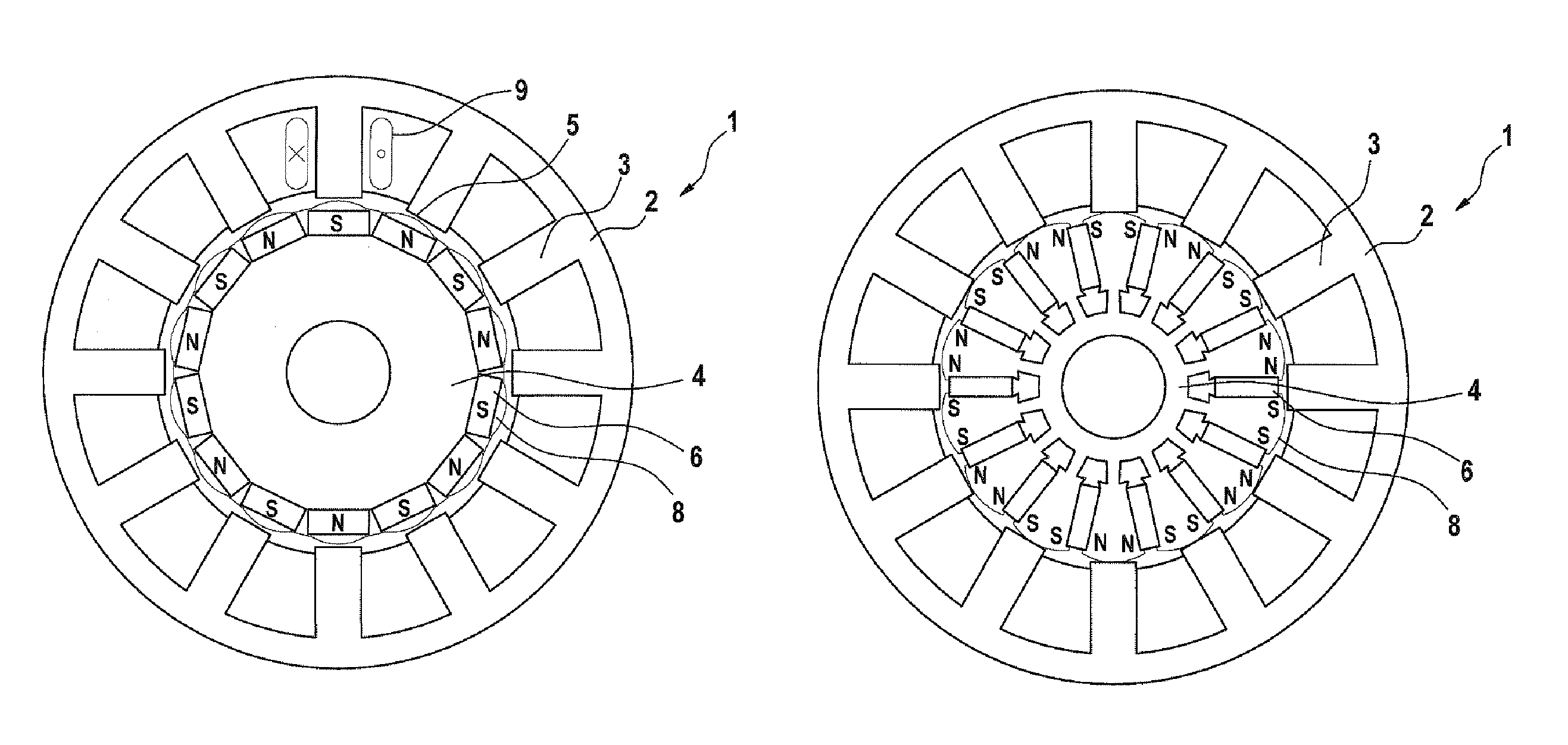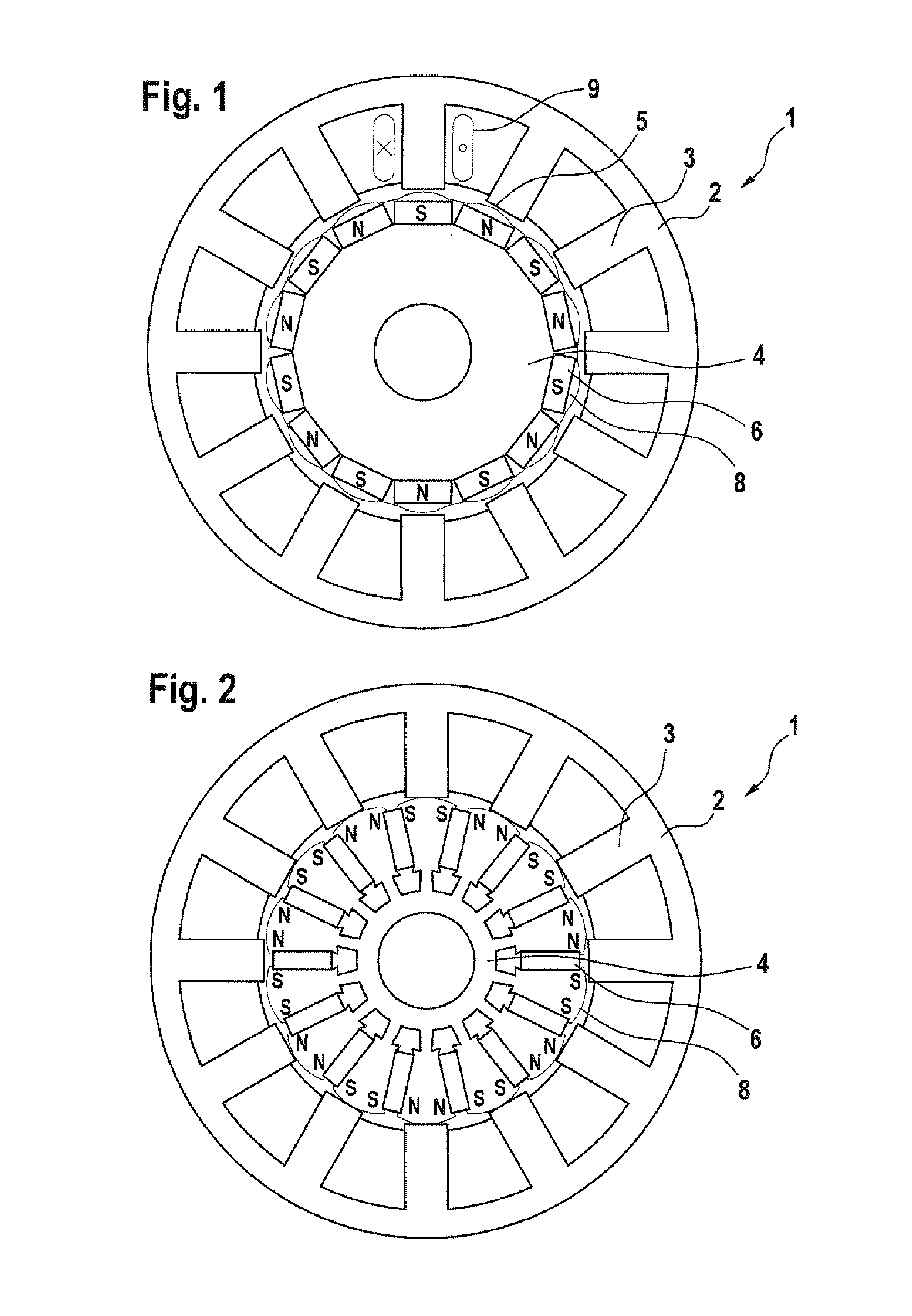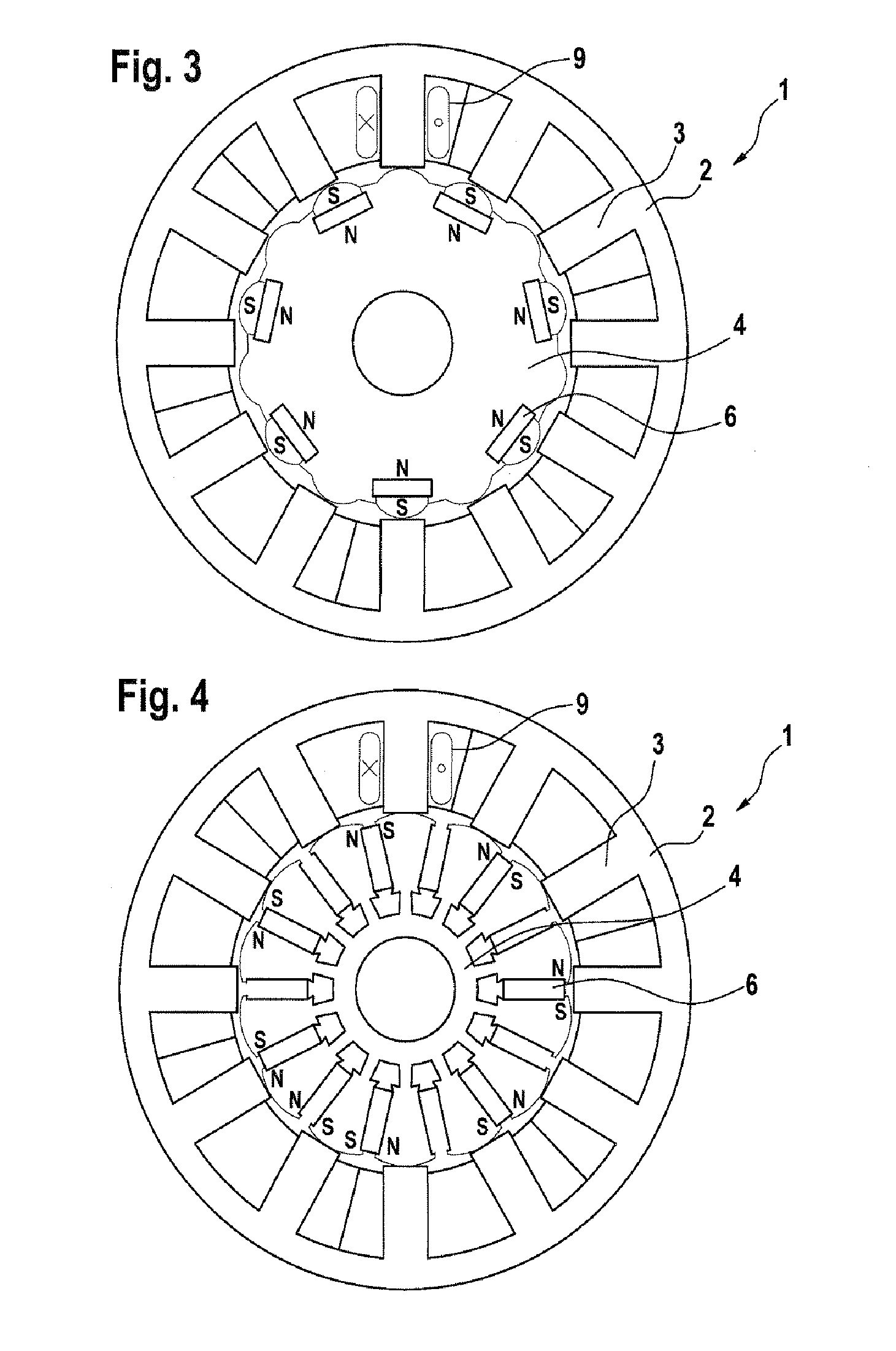Synchronous machine
a synchronous machine and synchronous technology, applied in the field of electric machines, can solve the problems of large torque oscillation, inability to switch off the magnetic field of the permanent magnet machine, and inability to ensure the quality of the torque during normal fault-free operation, so as to achieve small cogging torque, reduce torque ripple, and improve reliability
- Summary
- Abstract
- Description
- Claims
- Application Information
AI Technical Summary
Benefits of technology
Problems solved by technology
Method used
Image
Examples
Embodiment Construction
[0036]FIG. 1 shows a cross section through an electrical machine 1. The electrical machine has a stator 2, which surrounds a rotor 4 which can rotate about a center axis M. In the illustrated exemplary embodiment, the electrical machine is in the form of a synchronous machine.
[0037]The stator 2 has 12 stator teeth 3 which, projecting in the radial direction from a stator body of the stator 2, are directed inward in the direction of the rotor 4. This means that the stator teeth 3 are aligned in the direction of the center axis M of the electrical machine 1. The stator teeth 3 are uniformly separated from one another in the tangential direction, that is to say they are arranged with the same offset angle, and in the interior of the stator body.
[0038]The rotor 4 is arranged such that it can rotate about the center axis M and has the permanent magnets 6. The permanent magnets 6 form rotor poles 8 and are arranged such that their magnetic poles run in the radial direction. Adjacent perma...
PUM
 Login to View More
Login to View More Abstract
Description
Claims
Application Information
 Login to View More
Login to View More - R&D
- Intellectual Property
- Life Sciences
- Materials
- Tech Scout
- Unparalleled Data Quality
- Higher Quality Content
- 60% Fewer Hallucinations
Browse by: Latest US Patents, China's latest patents, Technical Efficacy Thesaurus, Application Domain, Technology Topic, Popular Technical Reports.
© 2025 PatSnap. All rights reserved.Legal|Privacy policy|Modern Slavery Act Transparency Statement|Sitemap|About US| Contact US: help@patsnap.com



